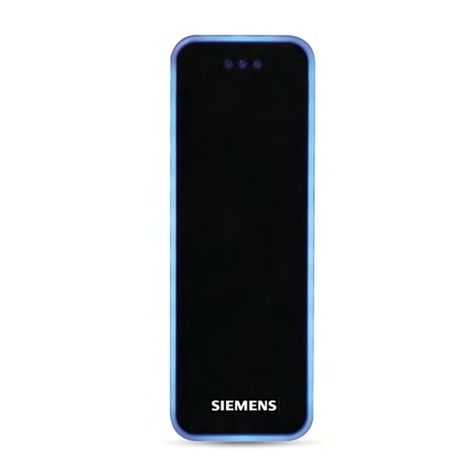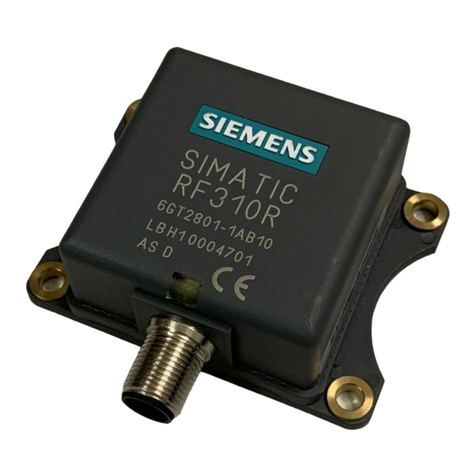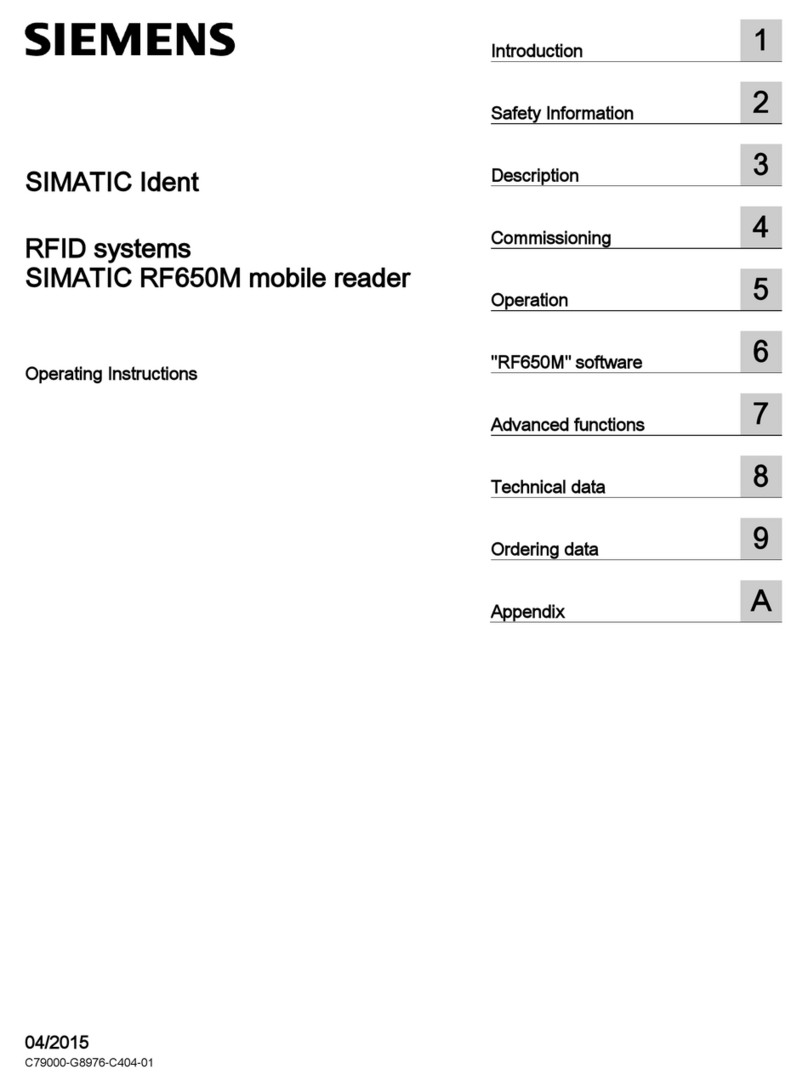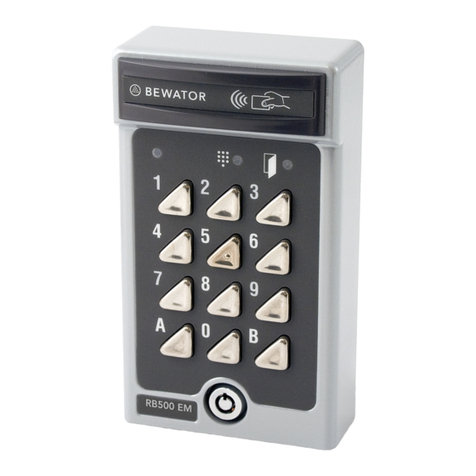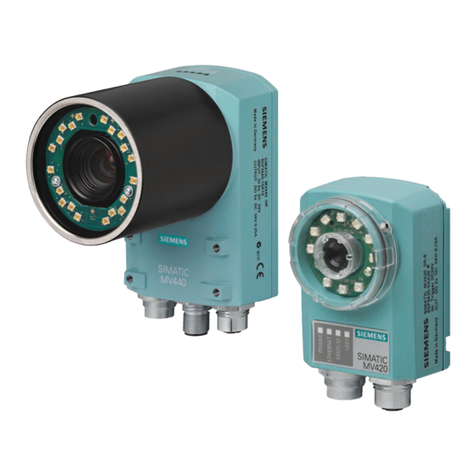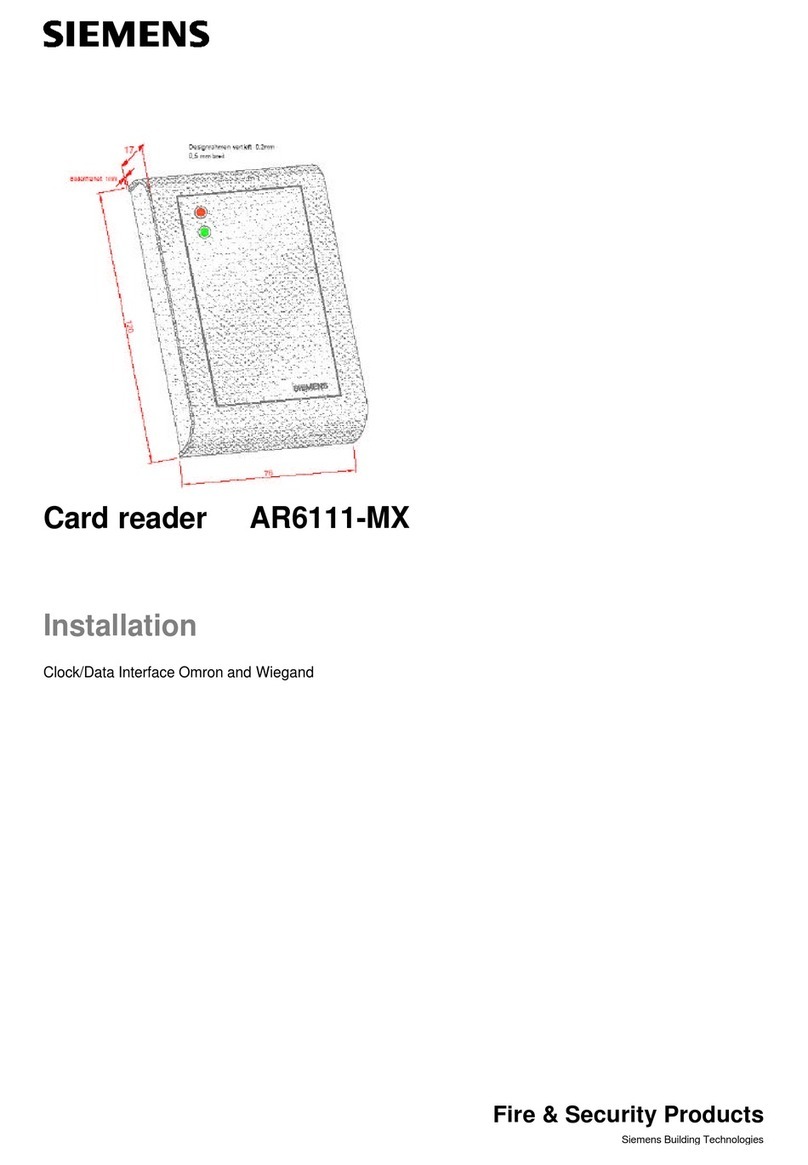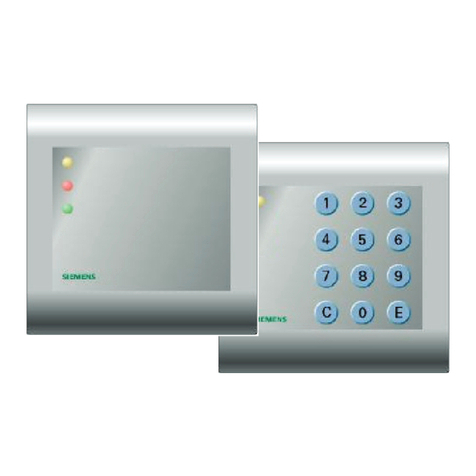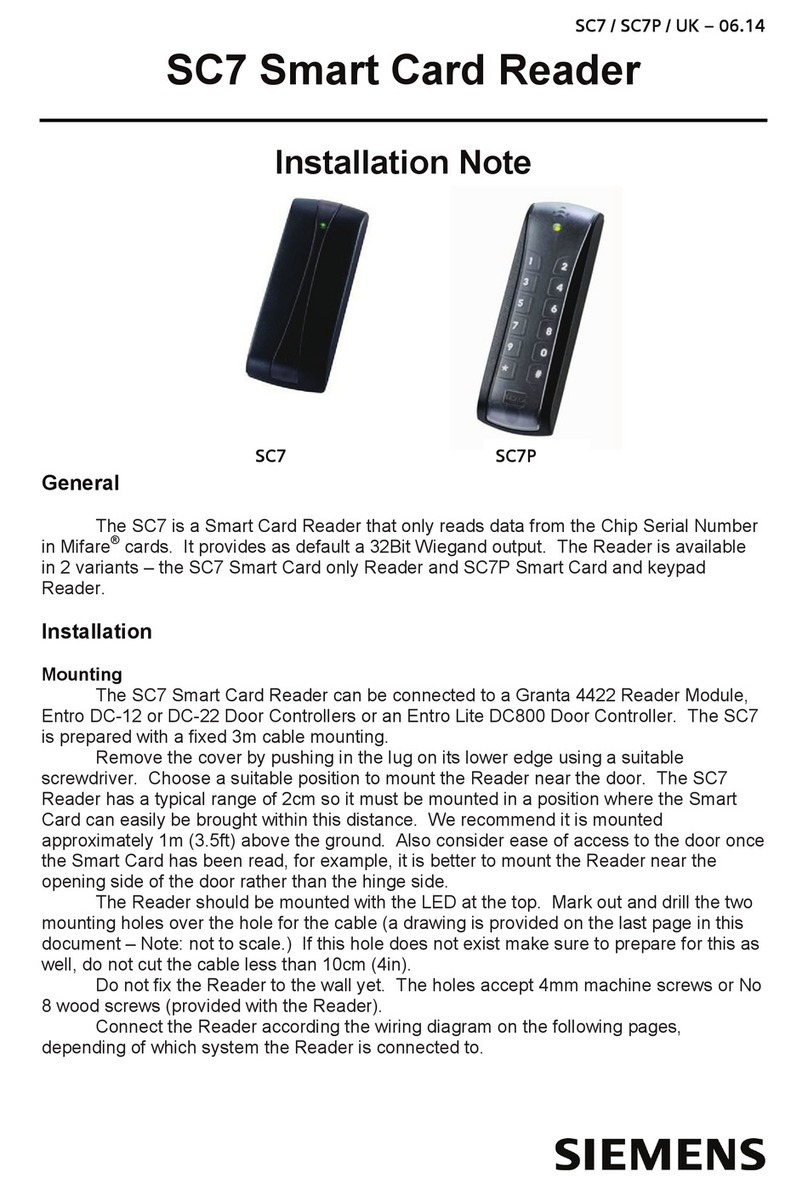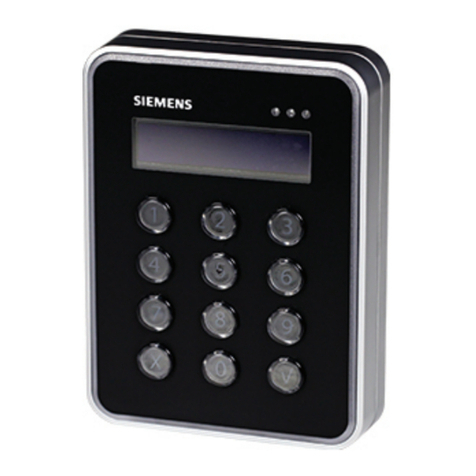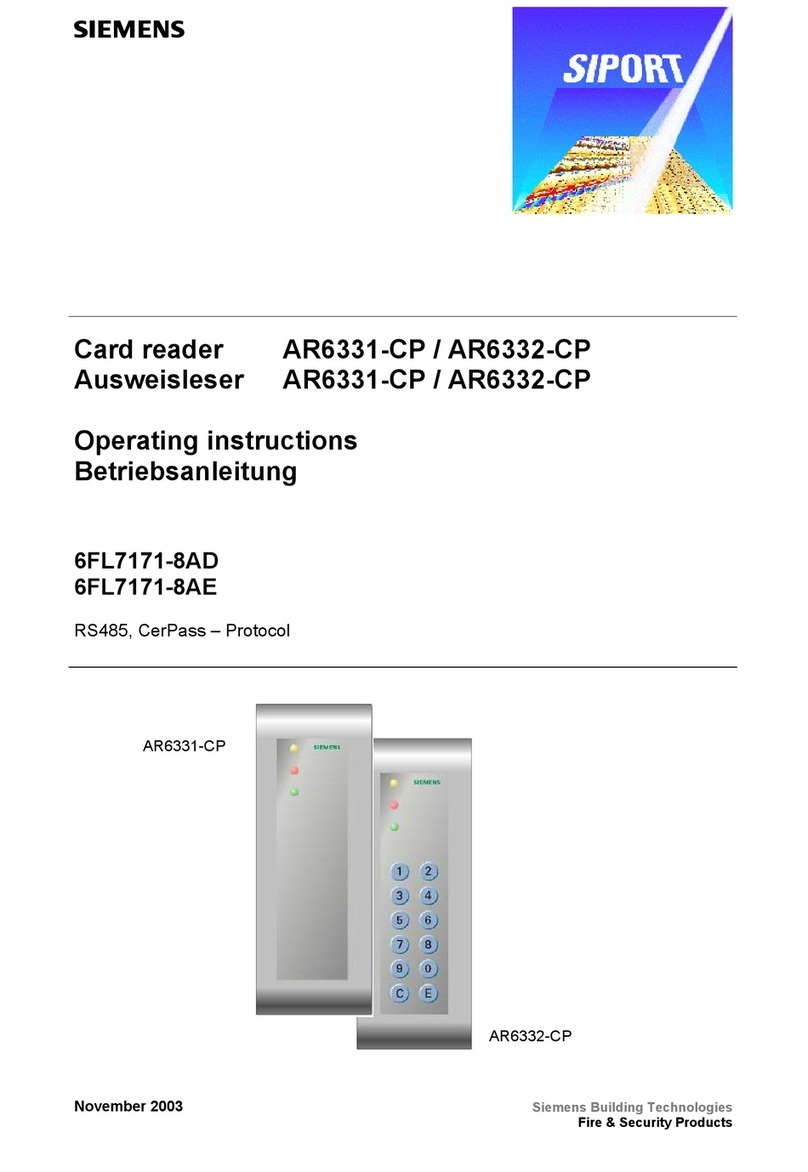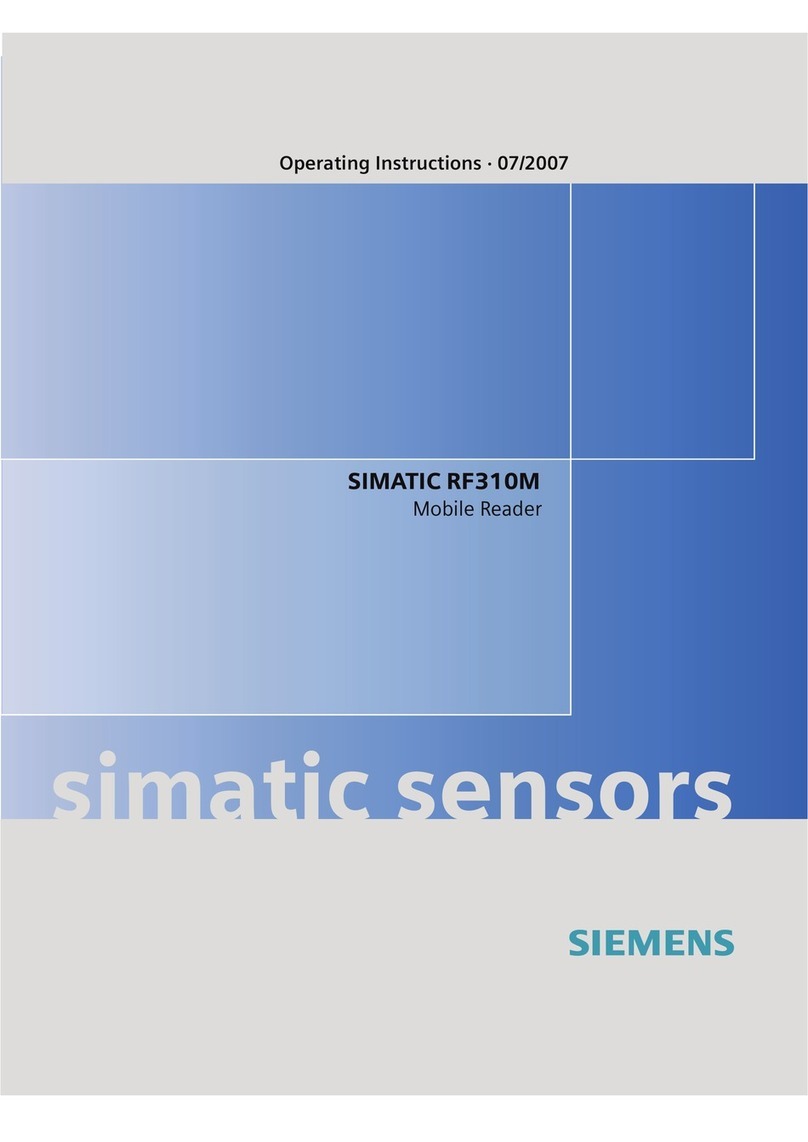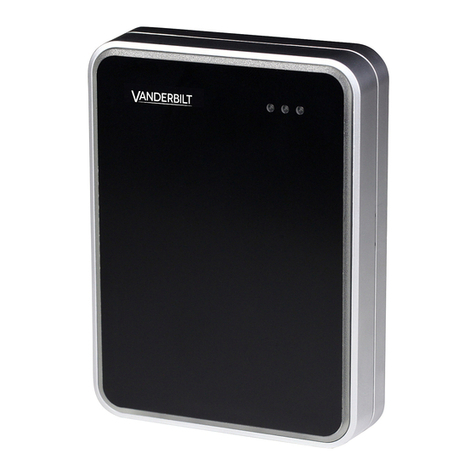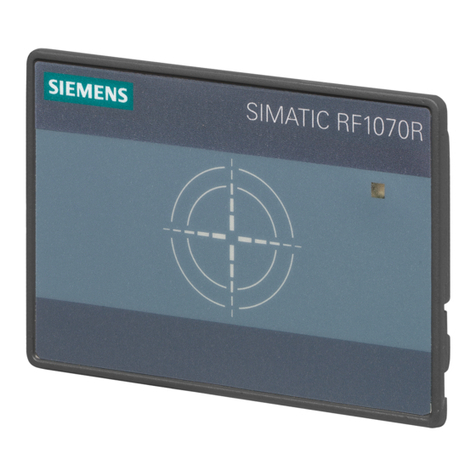Contents
1Approval...................................................................................................5
2Safety regulations and warnings...........................................................5
3General notes ..........................................................................................6
4Delivery volume.......................................................................................6
5Technical specifications ........................................................................7
6Installation ...............................................................................................8
6.1 Opening the housing.................................................................................8
6.2 Flush mounting..........................................................................................9
6.3 Surface mounting....................................................................................10
6.4 Connecting the reader, display elements ...............................................12
6.4.1 Power supply...........................................................................................13
6.4.2 RS485 interface ......................................................................................13
6.4.3 Clock/Data interface................................................................................13
7DIP switch settings ...............................................................................14
7.1 Address setting for RS485 bus operation, 2-wire ...................................14
7.2 Setting the address (Clock/Data)............................................................15
7.3 Communication interface and protocol selection ....................................15
7.4 Information to be read out of cards.........................................................16
8Transponders / ID cards.......................................................................18
8.1 Qualified transponder types (ID cards) ...................................................19
8.1.1 ISO14443A Proximity read range ...........................................................19
8.1.2 ISO14443A+B Proximity read range.......................................................19
8.1.3 ISO15693 Vicinity read range.................................................................20
8.2 Information on transponder.....................................................................20
8.2.1 Serial number..........................................................................................21
8.2.2 ID number ...............................................................................................21
8.3 Data formats of the Transponder............................................................22
8.3.1 BCD format .............................................................................................22
8.3.2 ASCII format............................................................................................23
8.3.3 Wiegand format.......................................................................................23
9Card reader configuration....................................................................24
9.1 Defining parameters................................................................................25
9.2 Launching the terminal program .............................................................25
9.3 Configuration mode of the Terminal program .........................................27
9.3.1 Commands..............................................................................................29
9.3.1.1 Firmware, new load.................................................................................29
9.4 Reader interface......................................................................................32
9.5 Output data formats ................................................................................32
10 Configuration parameters ....................................................................33
10.1 Config or ConfigCard parameters...........................................................33
10.2 Combination options ...............................................................................37
10.2.1 Serial number RS485 – CerPass reader protocol .................................37
10.2.2 Serial number RS485 – UCI reader protocol .........................................37
10.2.3 Serial number Clock / Data – Omron interface ......................................37
10.2.4 Serial number Clock / Data – Wiegand interface...................................38
10.2.5 ID number – ASCII format RS485 – CerPass reader protocol ..............38
10.2.6 ID number – ASCII format RS485 – UCI reader protocol......................38
10.2.7 ID number – BCD format RS485 – CerPass reader protocol .................39
3
Siemens Building Technologies
Fire & Security Products 12.2004
